I love a good, multifunctional home product (even more than I despise single-purpose appliances). Mason jars are the most ubiquitous kitchen item we own, and I’m here to give you the DL on why they’re my absolute favorite.
![]() A little history: A “Mason” jar is the generic term referring
to any glass jar with a threaded, screw-top lid.
The name “Mason” is after the guy who patented the jar with a two-piece lid in 1858.
There are brands of Mason jars, including… Mason. (How confusing.) But also Ball (what we use) and Kerr.
A little history: A “Mason” jar is the generic term referring
to any glass jar with a threaded, screw-top lid.
The name “Mason” is after the guy who patented the jar with a two-piece lid in 1858.
There are brands of Mason jars, including… Mason. (How confusing.) But also Ball (what we use) and Kerr.
Jump ahead to any section: We use Mason jars for dry goods organization, storing leftovers, as drinking glasses, for canning and fermenting various goodies, as vases for flowers and fresh herbs, as measuring cups, and as cookie cutters! And jars have some special properties that make them ideal for all of these uses, too !
1. Dry goods storage and organization
We used to keep open bags of lentils, beans and grains that (although this never happened, phew ![]() ) had the potential
for bug infestations.
) had the potential
for bug infestations. ![]()
![]() No longer, bébé! Check out our dry goods shelf:
No longer, bébé! Check out our dry goods shelf:
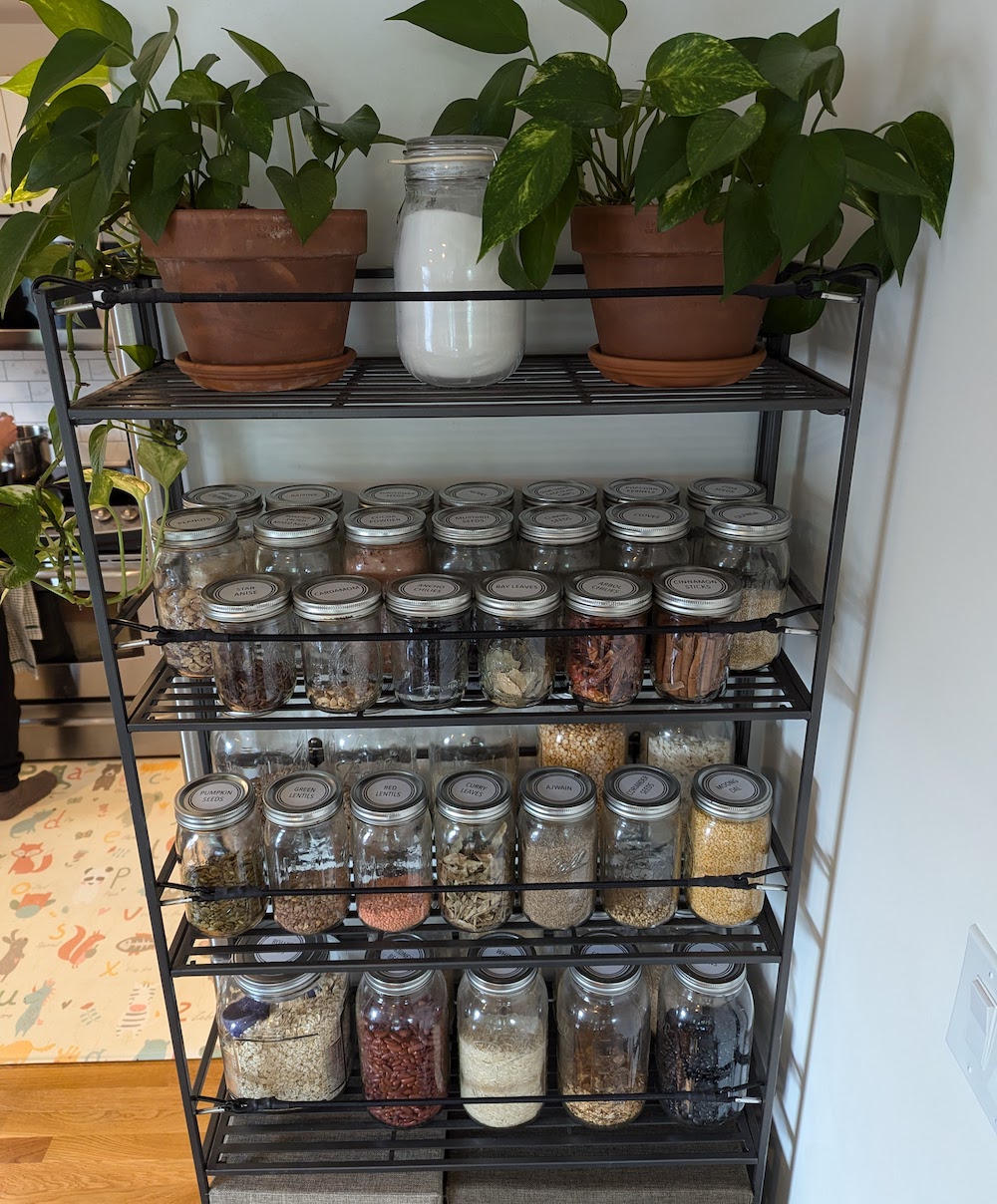
I only label the tops of the jars so that we can always see how much we have of any item. I make my labels in PowerPoint, then print them onto sticky shipping label paper and cut them out. But you could probably find jar lid stickers and make labels with your favorite label maker, too.
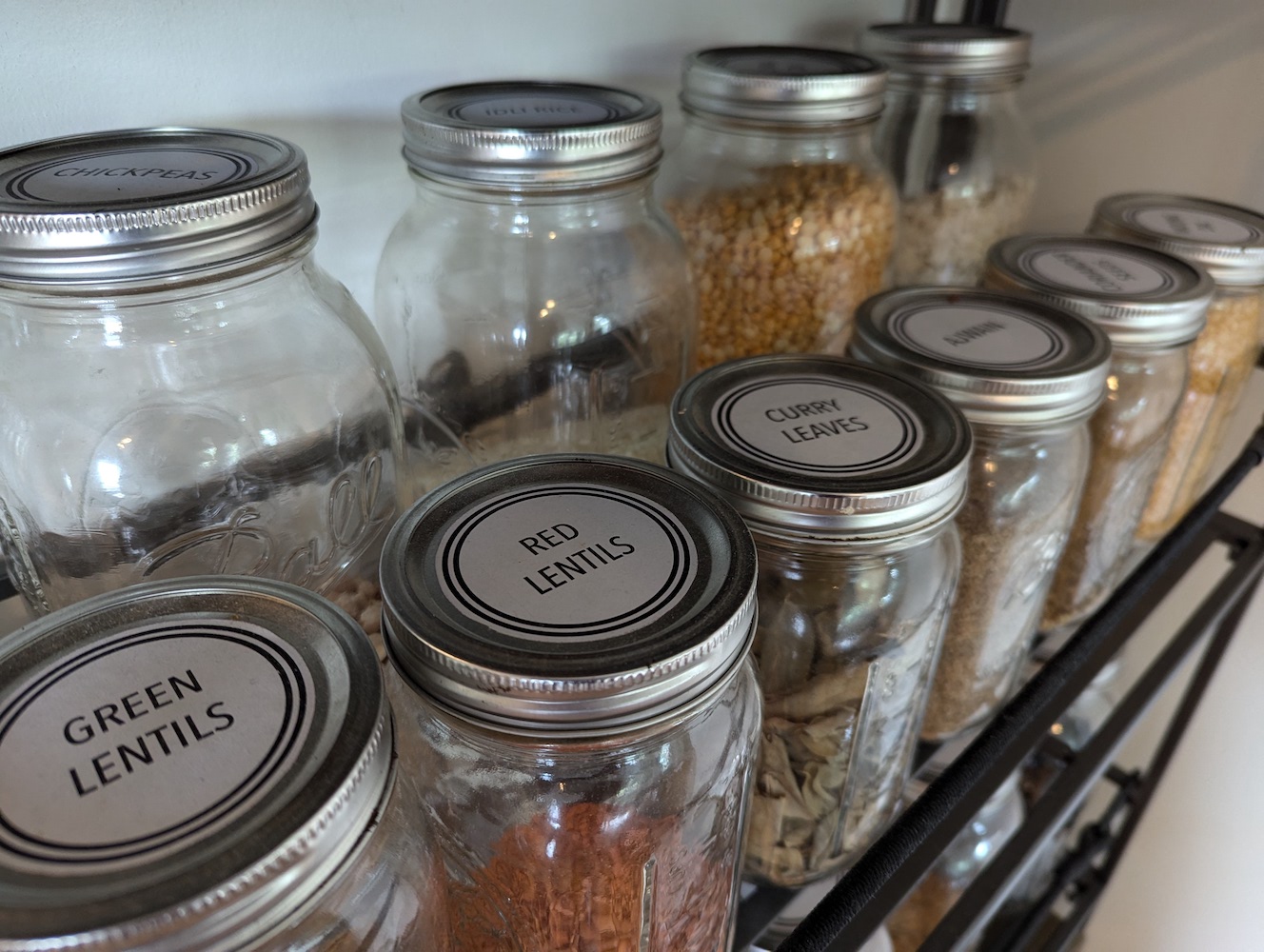
Best part #1: The standard wide-mouth lids fit
16oz pint jars,
32oz quart jars, and
64oz half gallon jars ! ![]() As we use things up (or restock), we can transfer contents across jar sizes and just screw on the same lid.
As we use things up (or restock), we can transfer contents across jar sizes and just screw on the same lid.
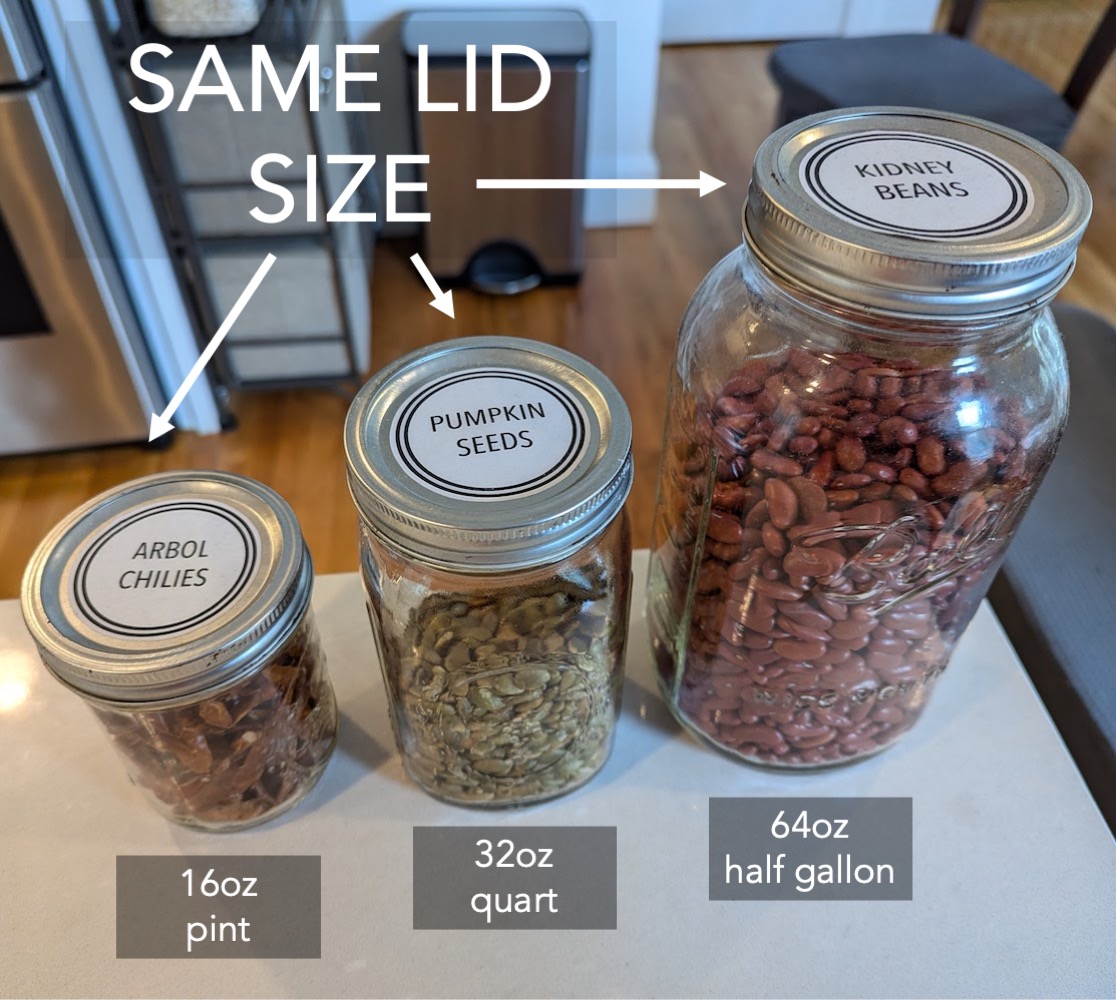
Notice that the lids come in two pieces: a lid and a band…
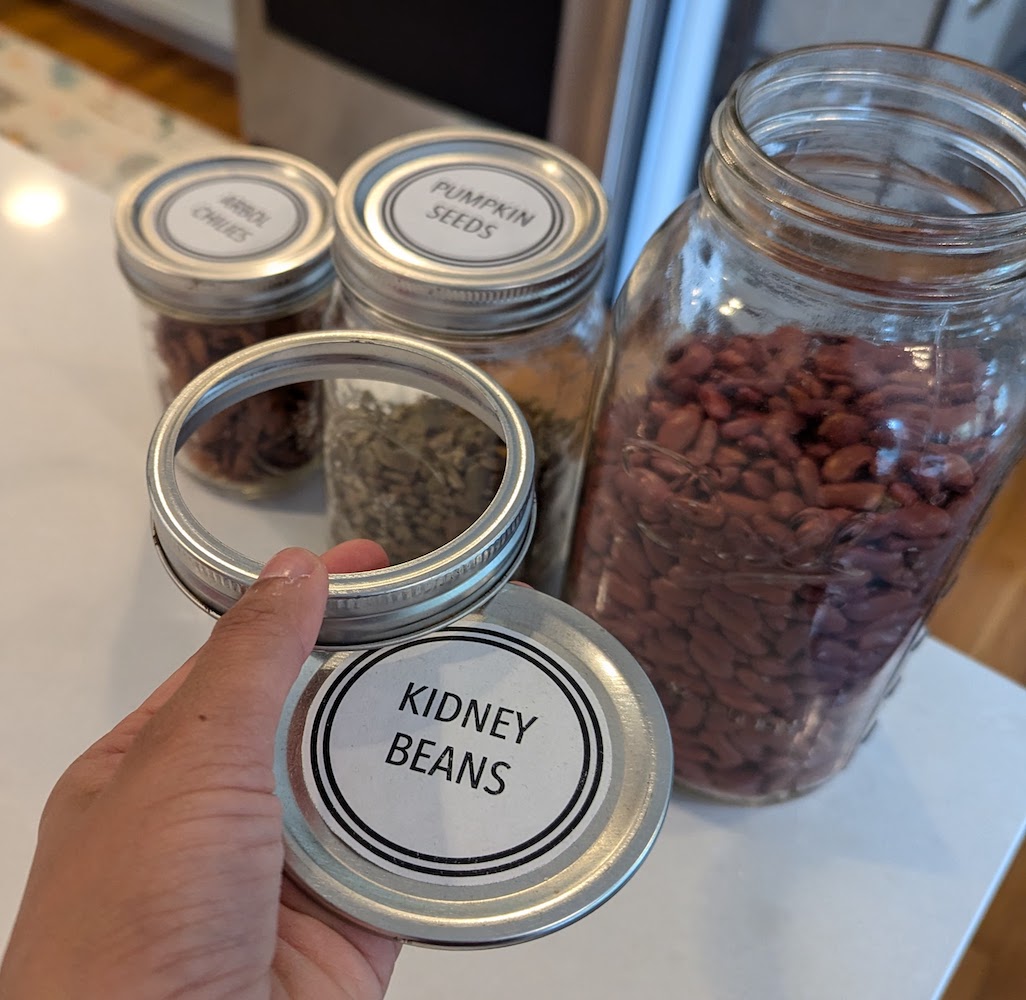
Best part #2: I save my labeled lid tops super efficiently! ![]() When we rotate through different dry goods throughout the year,
I just swap out lids as needed. Our yearly grain share haul has deeeeelicious spelt, barley, popcorn kernels and flours.
When we rotate through different dry goods throughout the year,
I just swap out lids as needed. Our yearly grain share haul has deeeeelicious spelt, barley, popcorn kernels and flours.
![]()
![]()
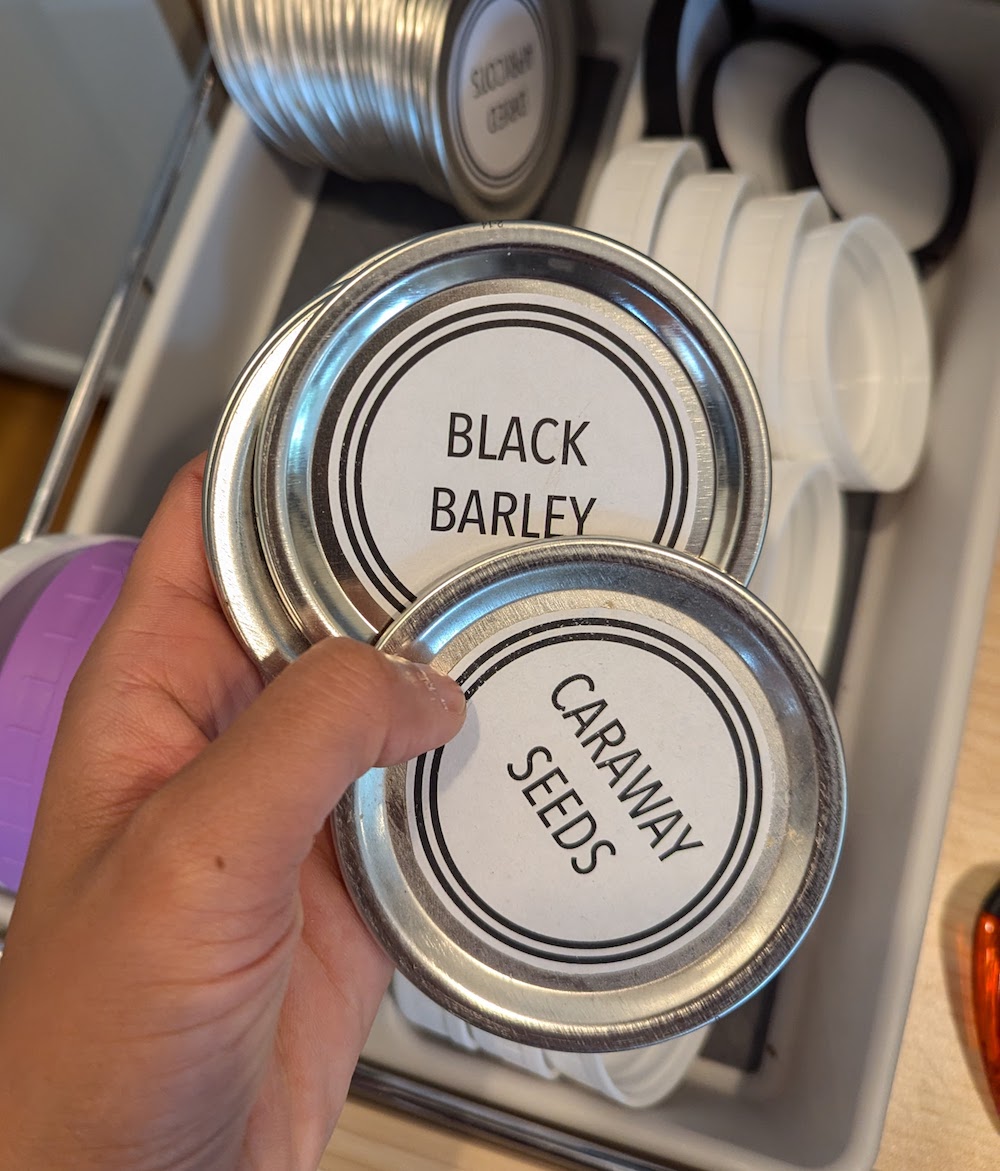
An aside. I was so delighted by my labeled Mason jars that I also made matching
mini-labels for the spices we keep next to the stove. ![]()
![]()
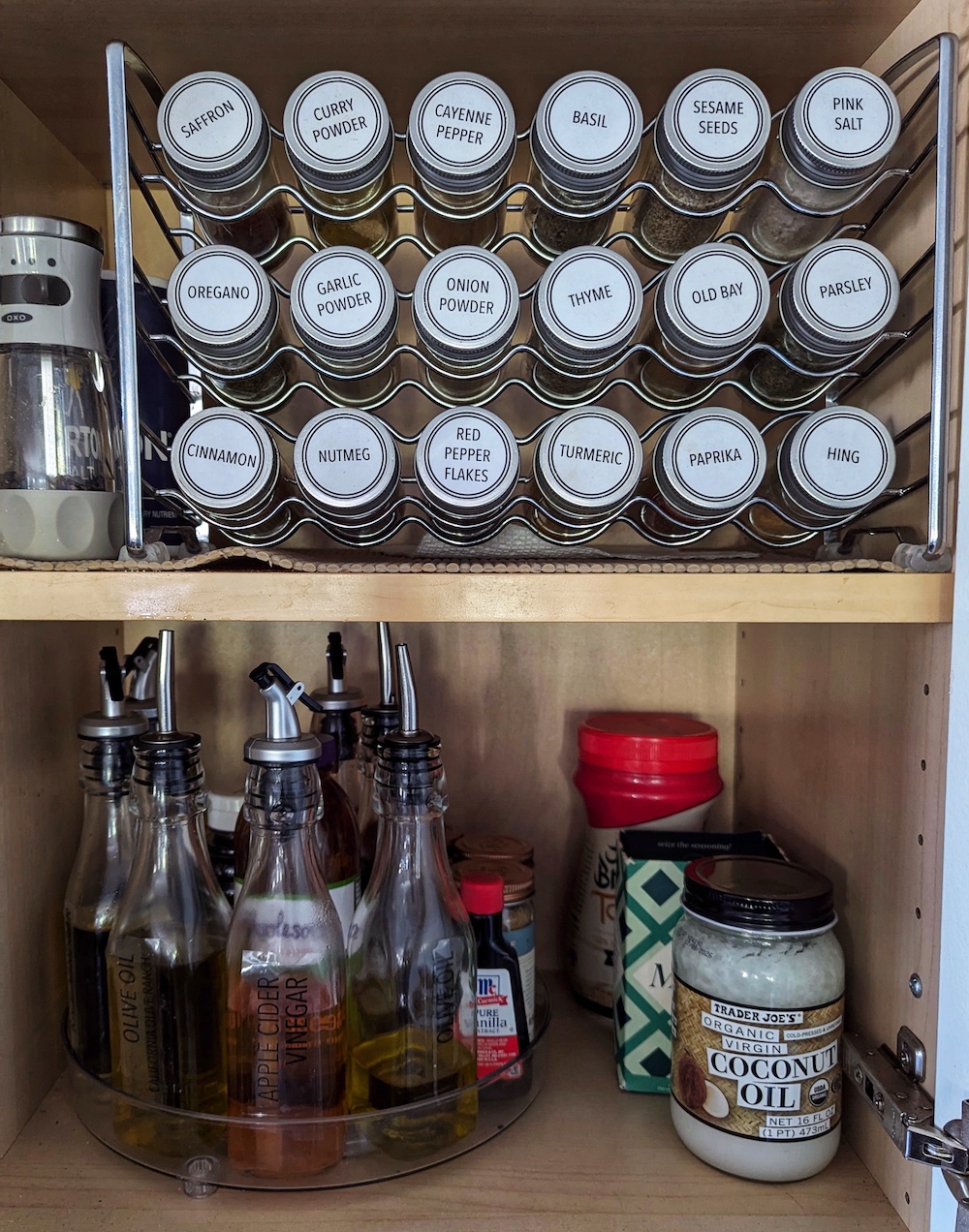 We decant oils and vinegars into pour spout containers and
keep them on a lazy susan for easy access.
We decant oils and vinegars into pour spout containers and
keep them on a lazy susan for easy access.
2. Leftovers
We store leftovers in 16oz pint and 8oz jars closed with plastic wide-mouth and regular-mouth lids.
Life hack PSA: Storing leftovers in the fridge door means I can see what amazing meals my husband has left for me
without having to dig through the fridge. ![]()
![]()
![]()
![]() In our family, this has led to much less food waste.
In our family, this has led to much less food waste.
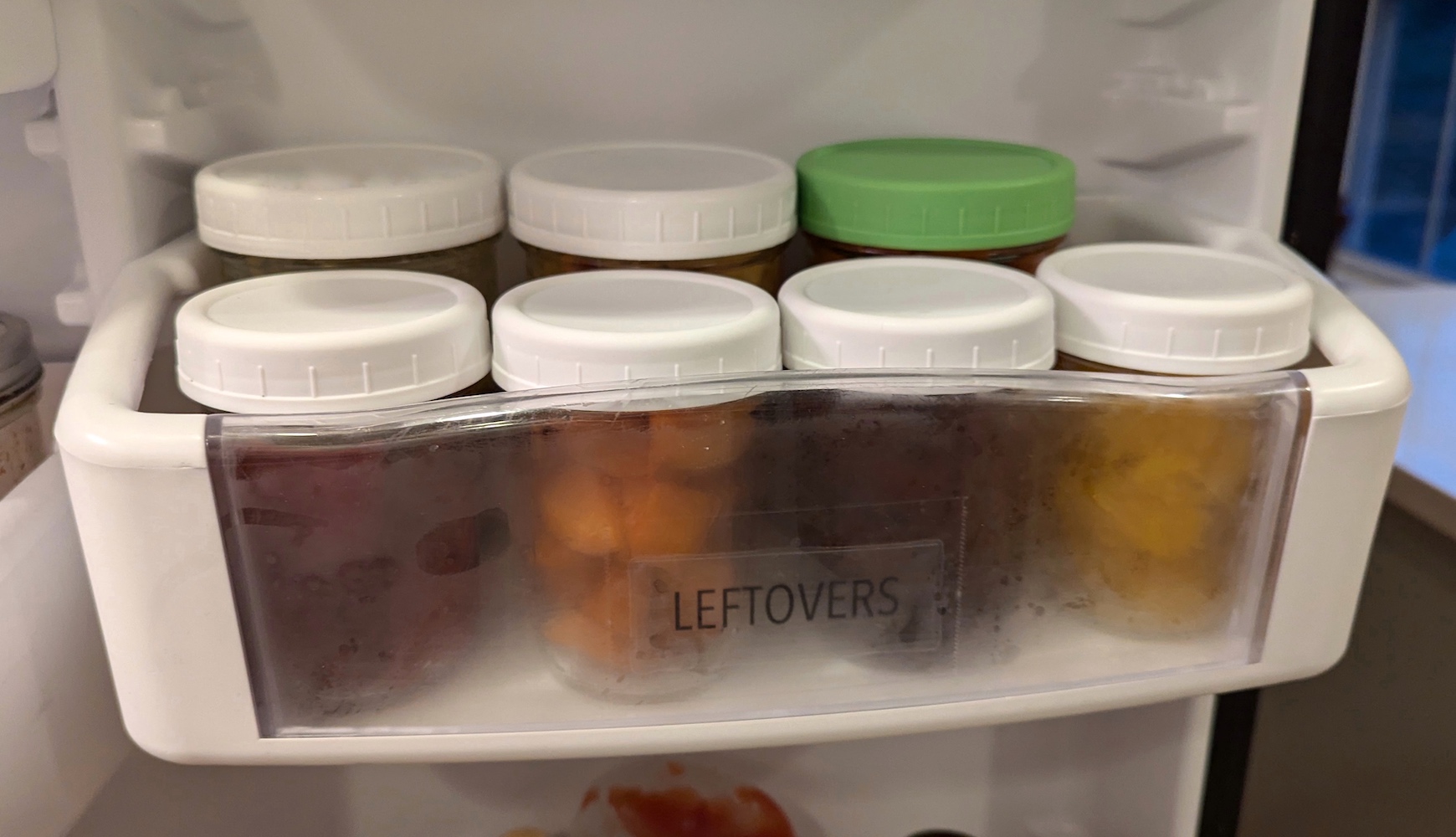
Pint-size jars are also perfect portions for a lunch or dinner!
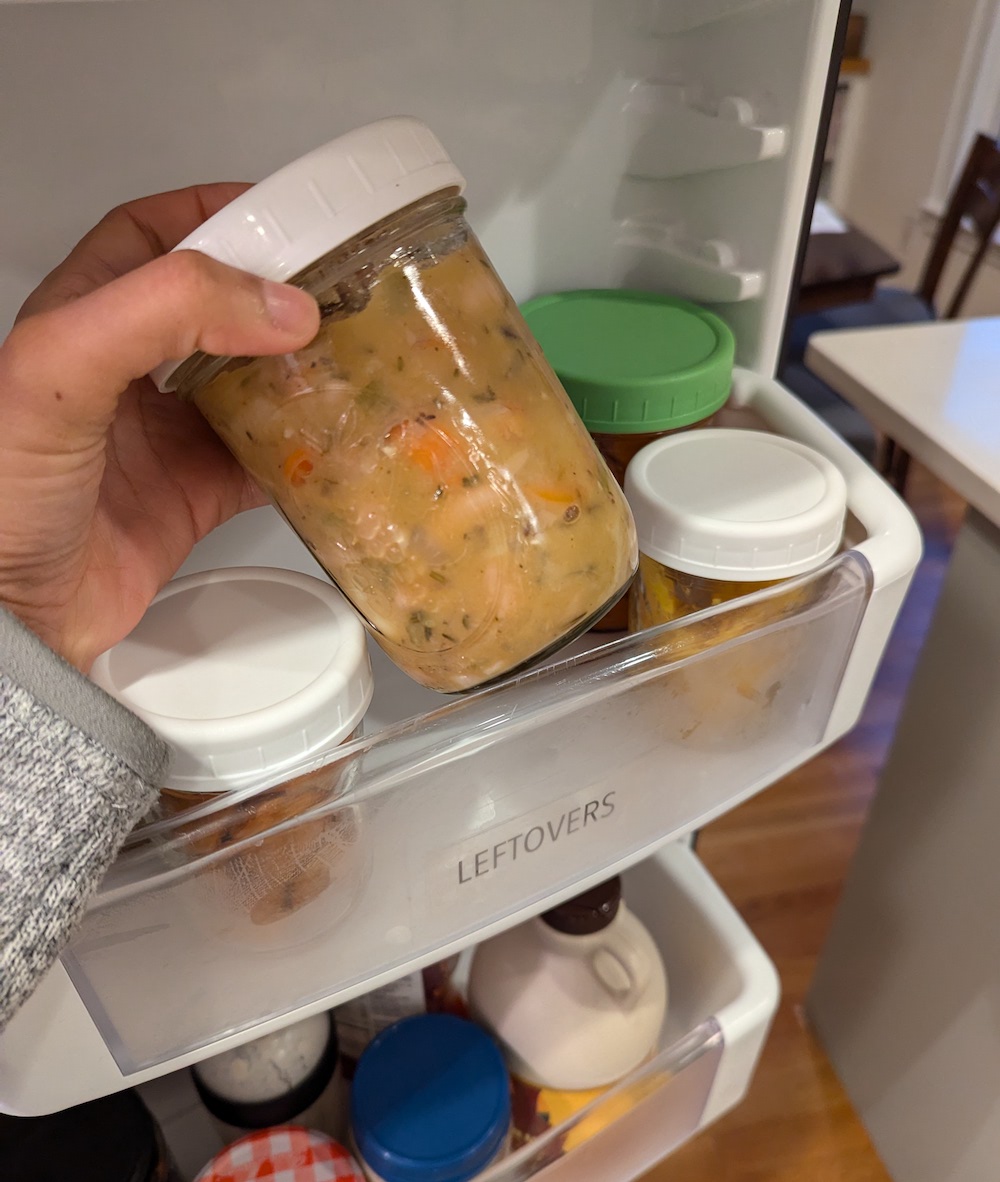
3. Drinking glasses
By using the same jars as drinking glasses and for leftovers, we save quite a bit of kitchen cabinet space,
and unloading the dishwasher is one step easier, too.
Trendy or not, this is undeniably efficient! ![]()
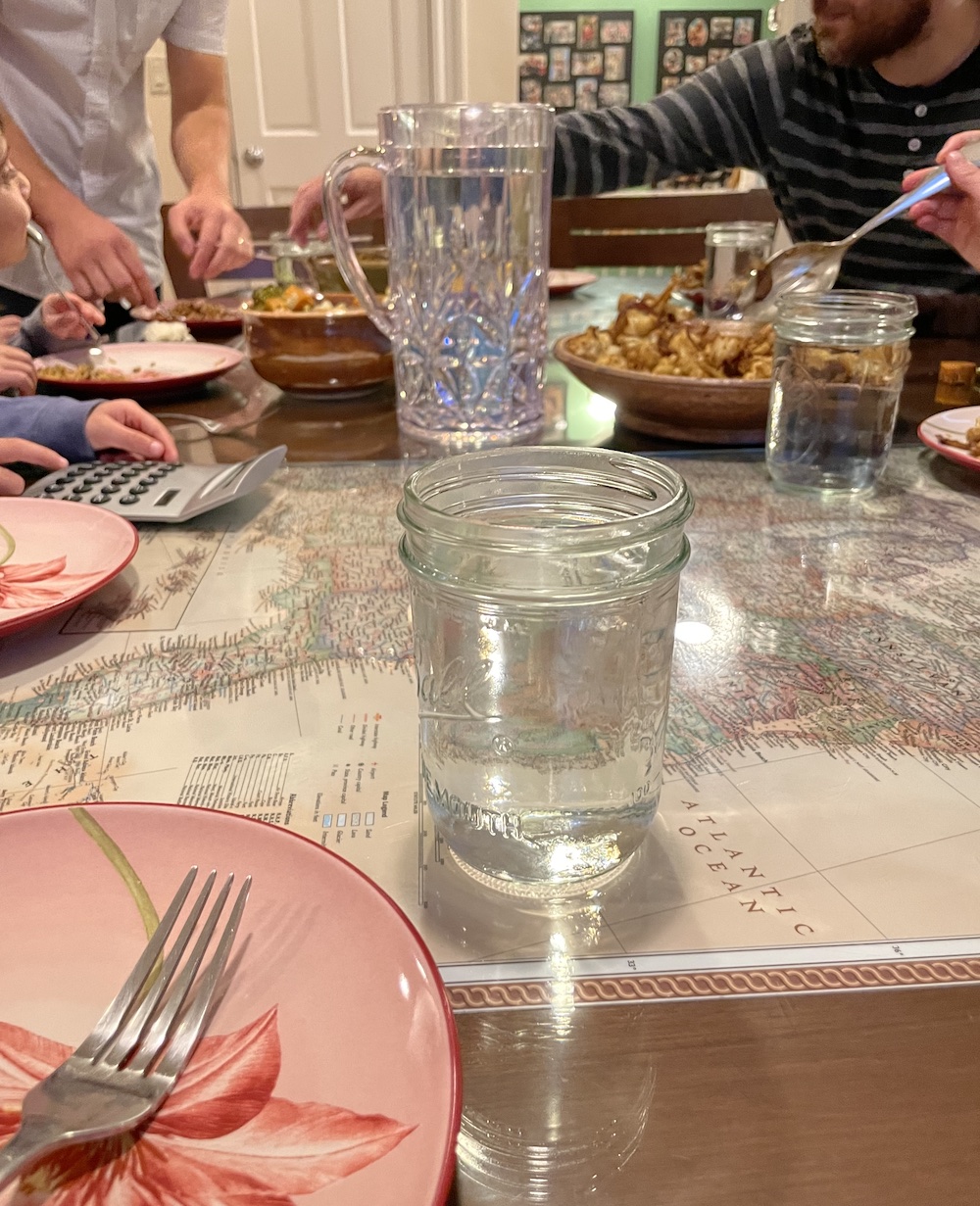
4. Canned goodies
Every summer, we order a half bushel
of pickling cucumbers from our farm share and spend an afternoon home canning enough
bread-and-butter pickles to last
through the year. ![]()
![]()
![]()
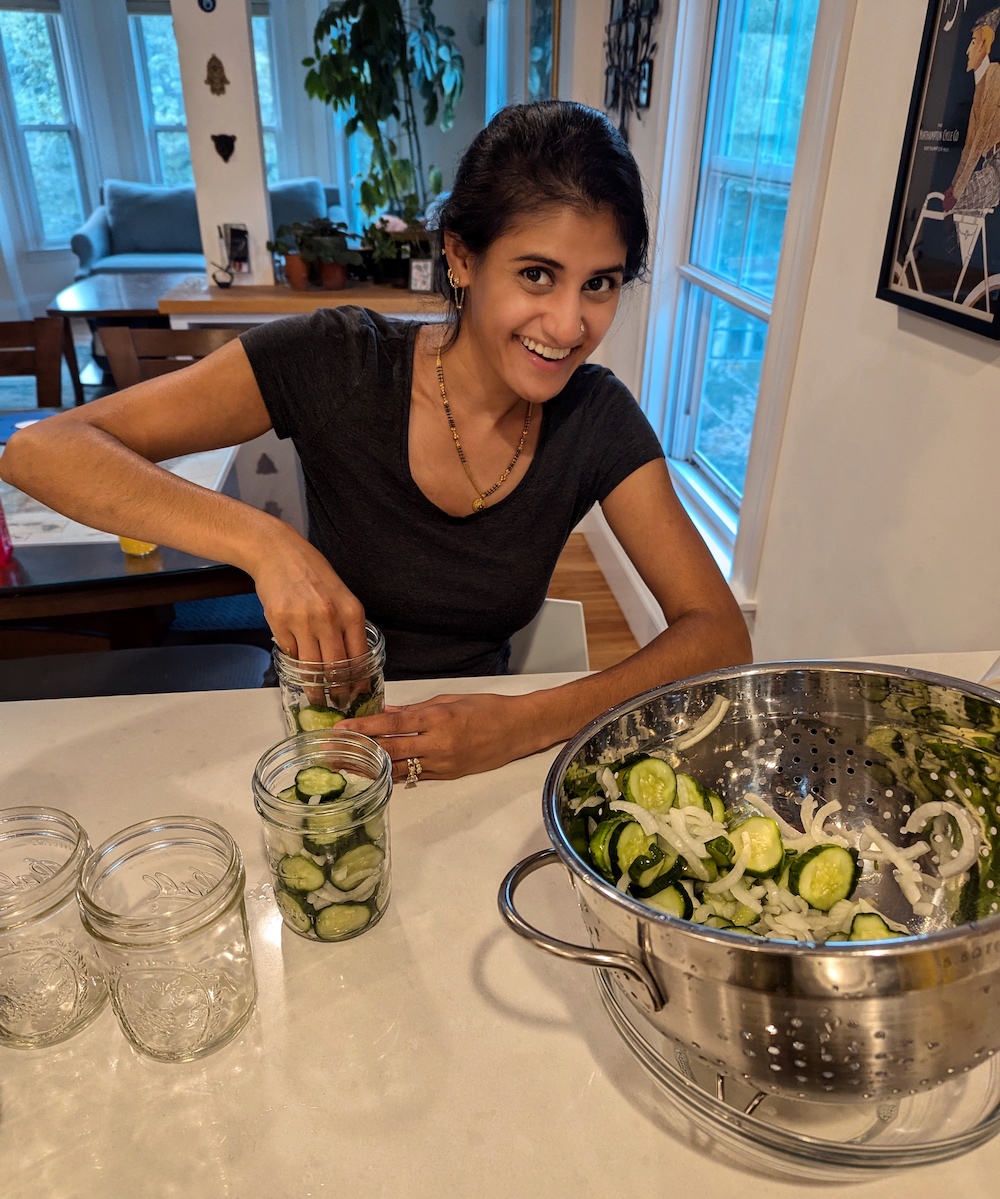
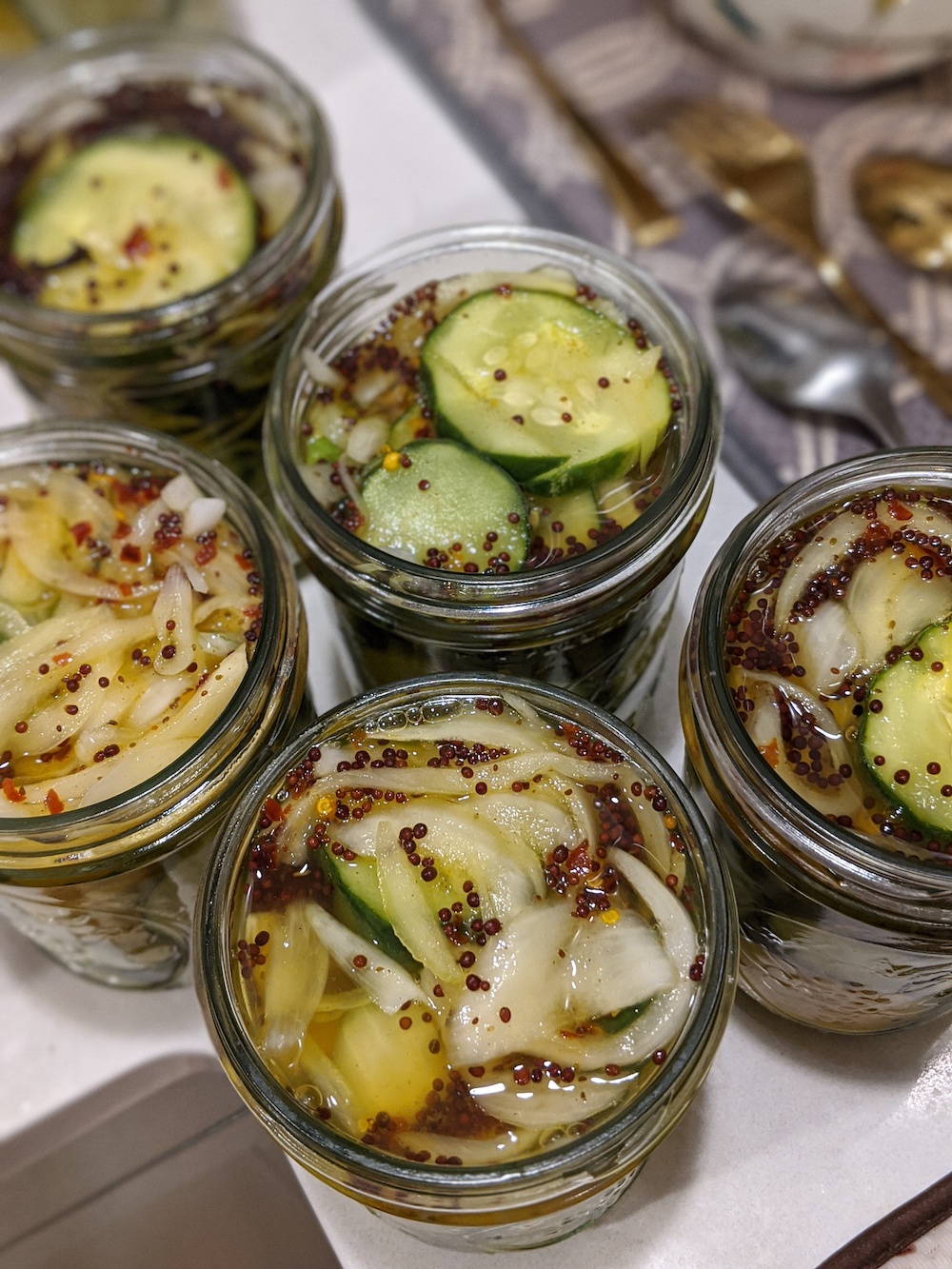
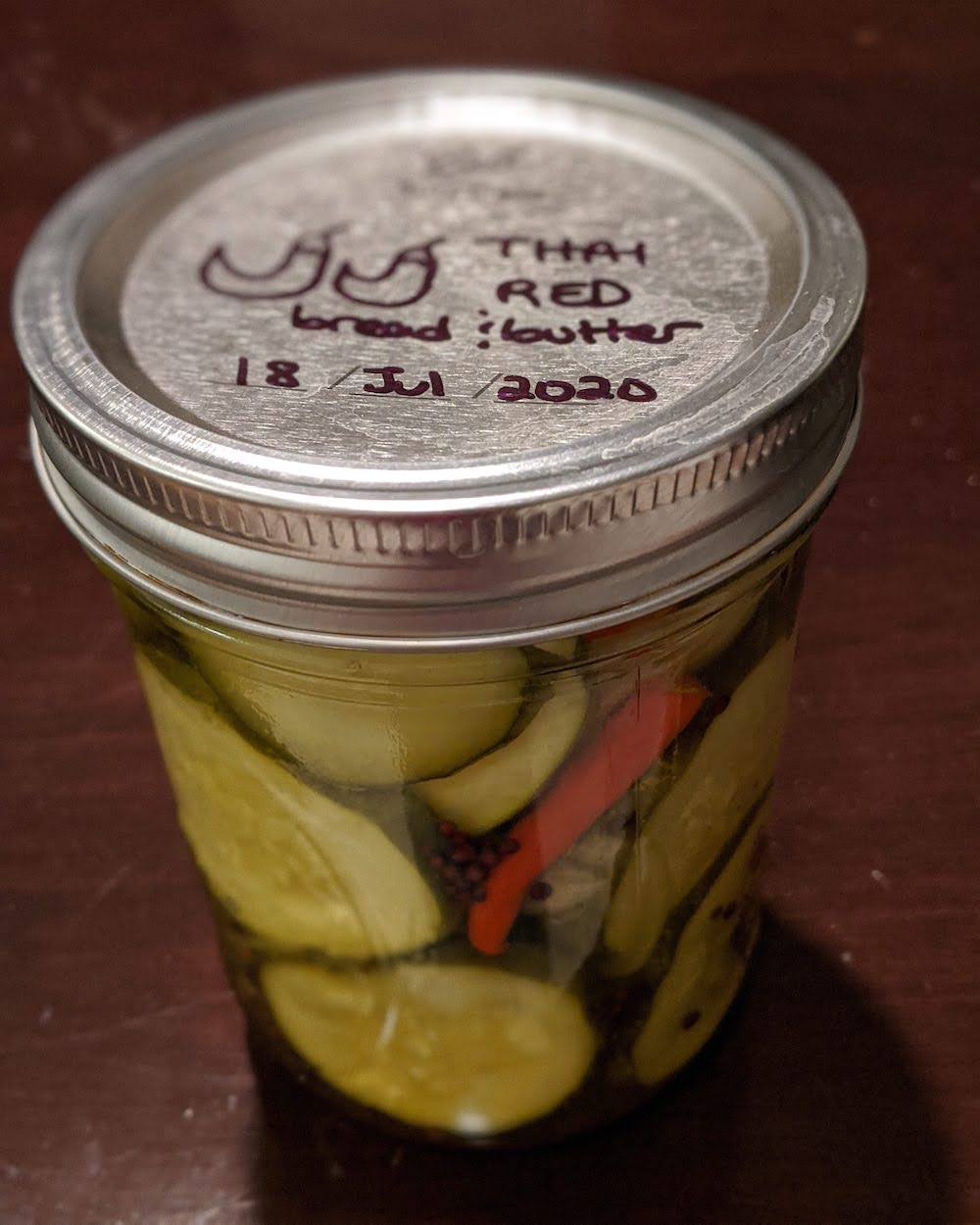
5. Fermented goodies
Like canning, fermenting foods is another homestead-y life skill “we” (my husband, really) picked up when we lived in Western Mass. The two-piece lid on Mason jars allows fermenting goodies (like kombucha and sour-dough starter) to “breathe”.
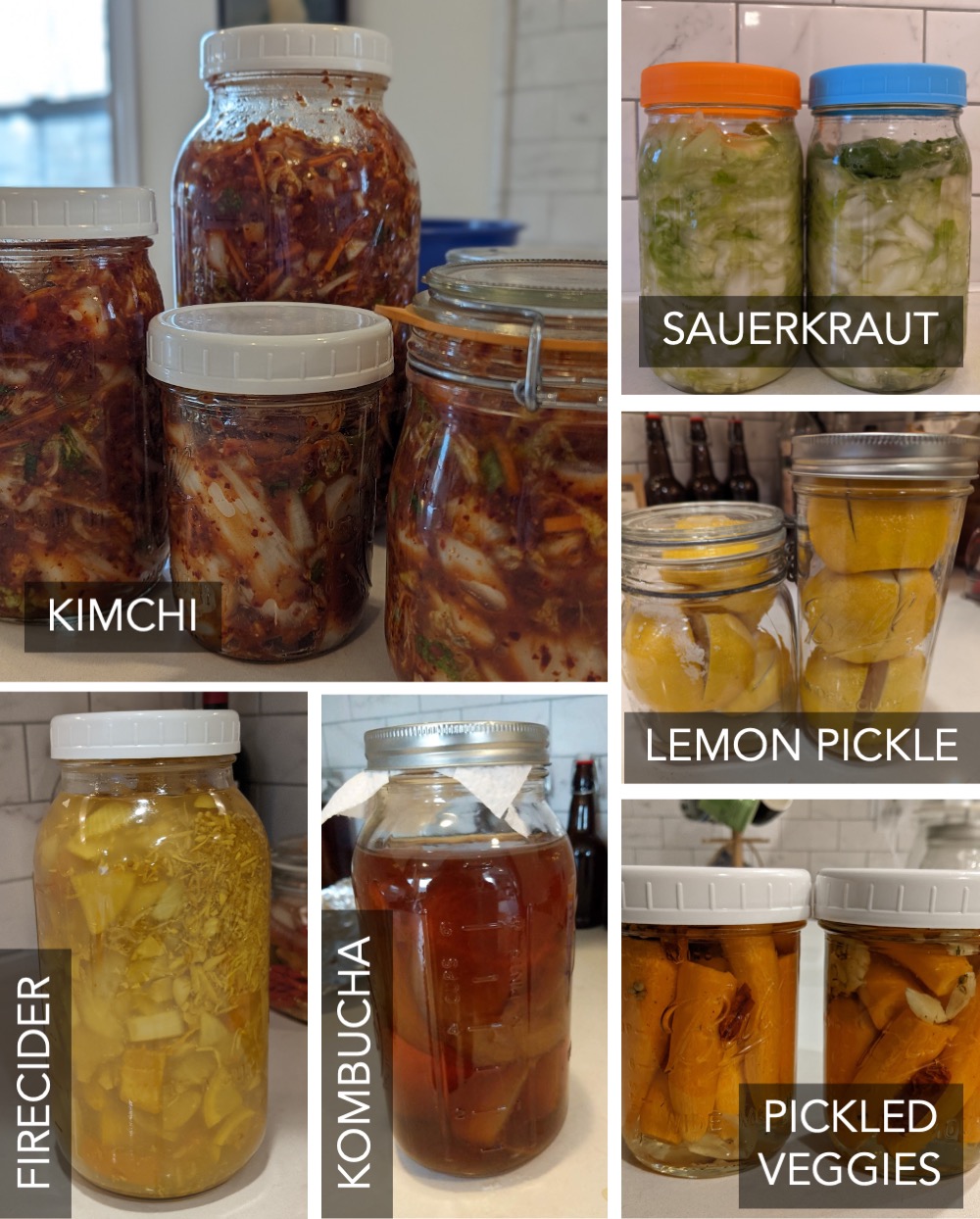 Not pictured: sour dough starter, fermented hot sauce, lacto pickles, and yogurt, all of which we also make in jars!
Not pictured: sour dough starter, fermented hot sauce, lacto pickles, and yogurt, all of which we also make in jars!
6. Flower (and herb) vases
More family traditions! My kiddos get weekly flower bouquets from the grocery store, which we arrange in jars. ![]() In the summer, they also harvest herbs
from our garden that we keep fresh in jars.
In the summer, they also harvest herbs
from our garden that we keep fresh in jars. ![]()
![]() This means I dedicate zero space to storing delicate vases.
This means I dedicate zero space to storing delicate vases.
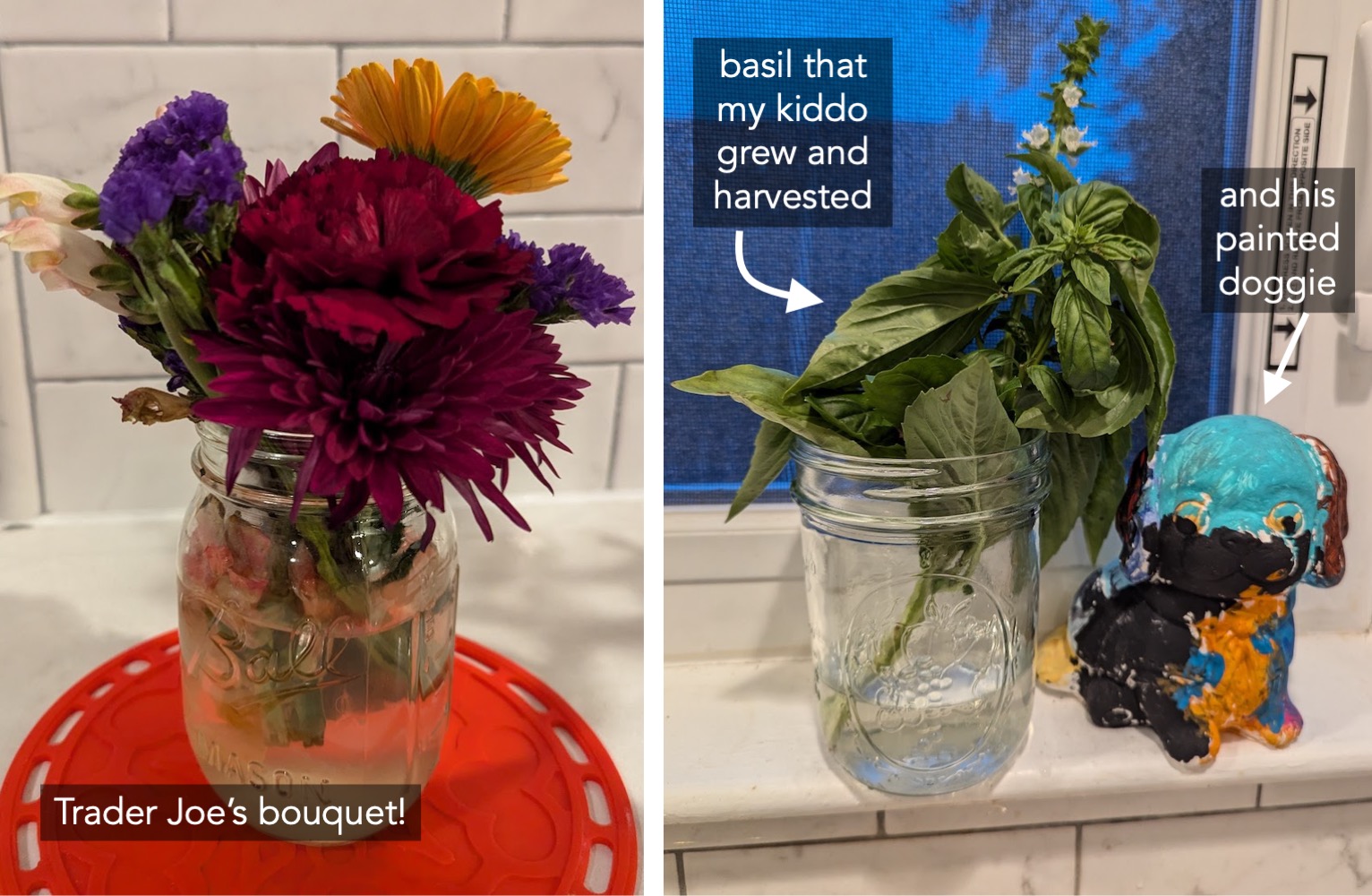
7. Measuring cups
Did you notice that Mason jars have embossed liquid ounce measurements? ![]() Since we already use jars as glasses, we skip the step
of using (and then washing) a measuring cup when making coffee from
cold brew concentrate
or measuring milk for
hot chocolate!
Since we already use jars as glasses, we skip the step
of using (and then washing) a measuring cup when making coffee from
cold brew concentrate
or measuring milk for
hot chocolate! ![]()
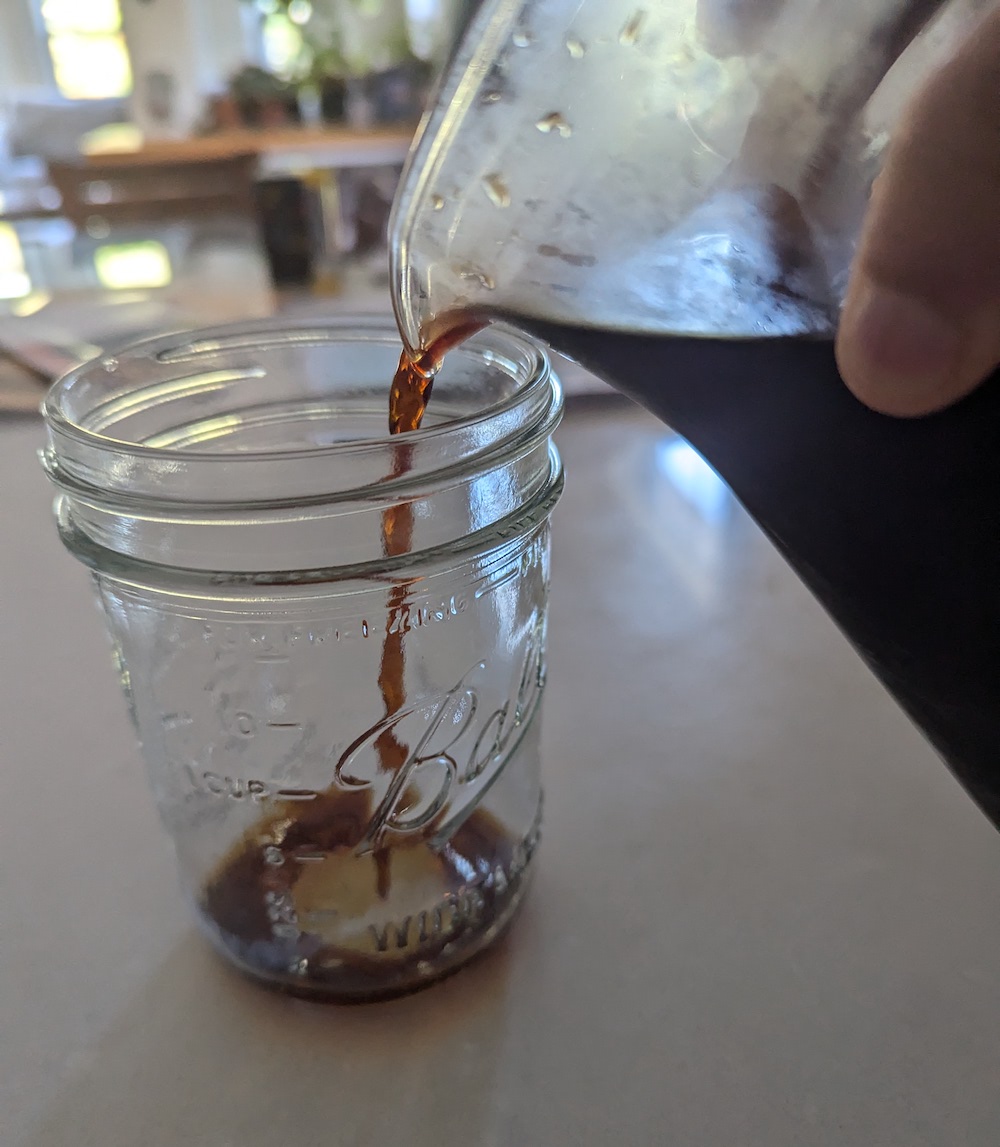
8. Cookie cutters
Another annual family tradition of ours is celebrating Purim
each spring by baking
triangle-shaped cookies called hamentashen. ![]() Mason jars
are the perfect size to cut the starting dough circles we need (before adding filling and folding three sides in).
Mason jars
are the perfect size to cut the starting dough circles we need (before adding filling and folding three sides in).
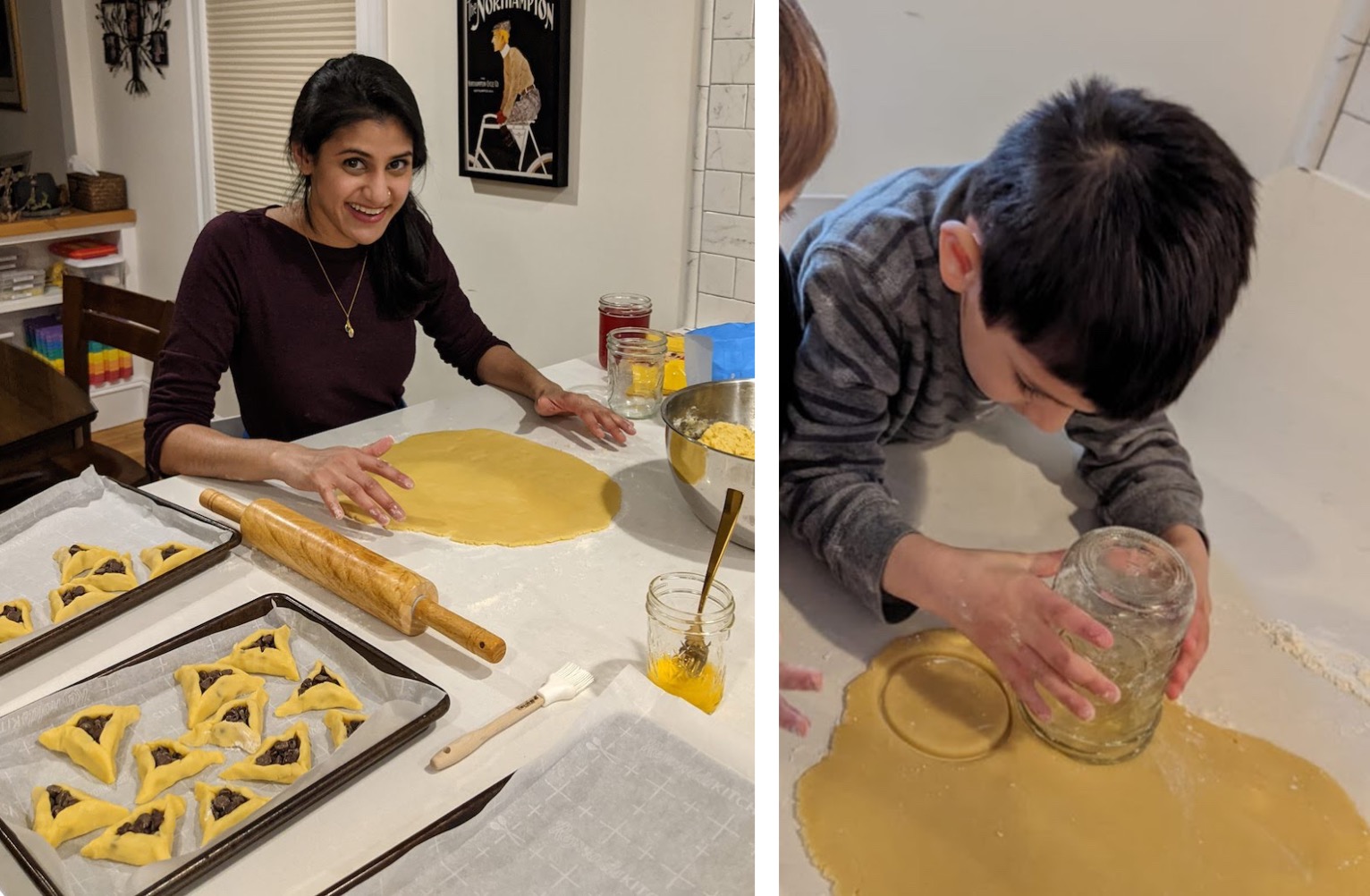
We make a lot of cookies and mail them out to friends and family around the States. ![]() Our Purim tradition is the only reason I bought shipping label printer sheets in the first place, which I then
also started using for custom labels around the house.
The Mason-jar-cut cookies can be tetris-ed perfectly into USPS small flat rate boxes
that I add prepaid shipping labels to at home.
Our Purim tradition is the only reason I bought shipping label printer sheets in the first place, which I then
also started using for custom labels around the house.
The Mason-jar-cut cookies can be tetris-ed perfectly into USPS small flat rate boxes
that I add prepaid shipping labels to at home.
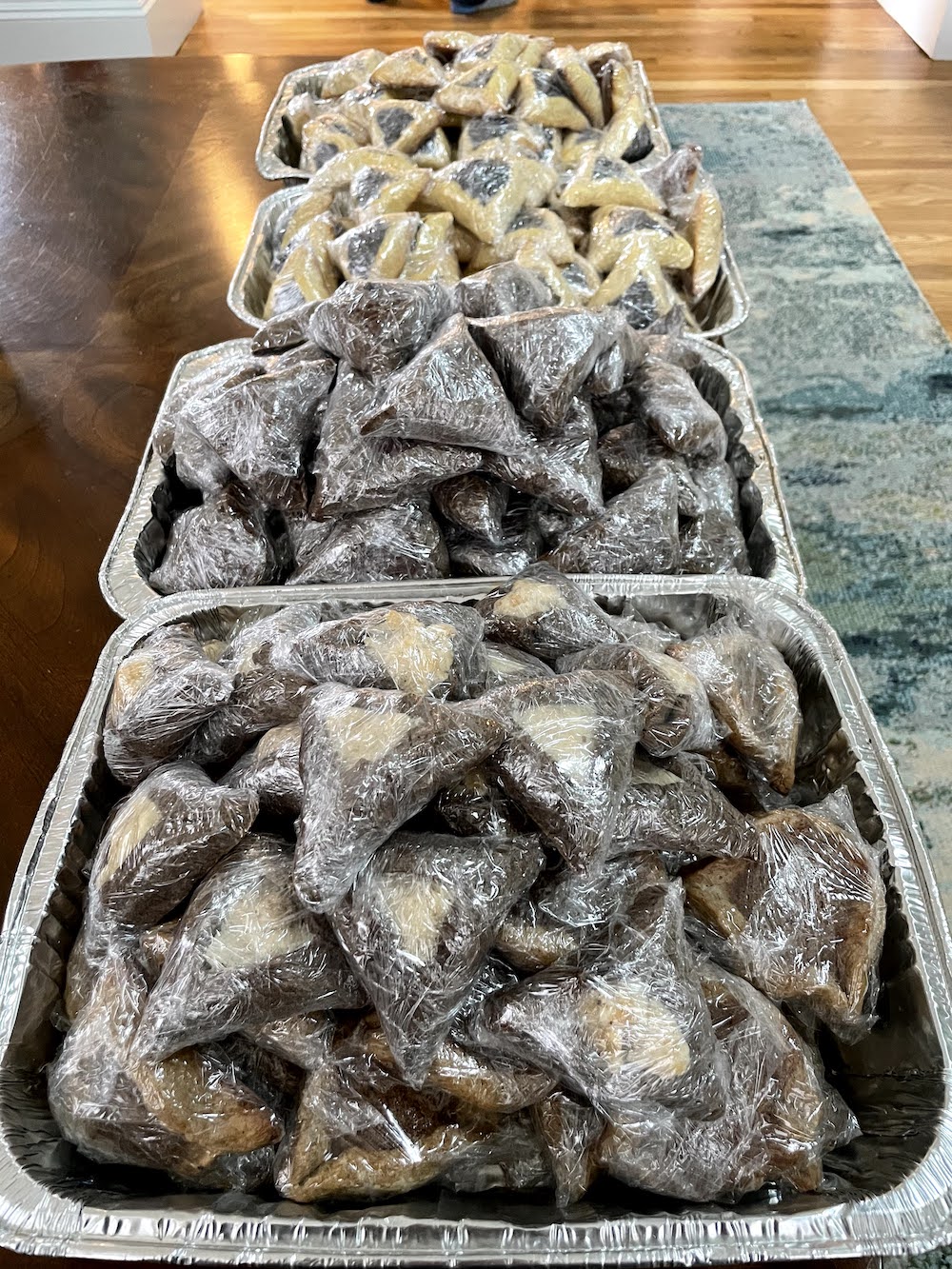 Our 2022 batch of 300+ cookies, featuring classic prune, chocolate peanut-butter, and pumpkin!
Our 2022 batch of 300+ cookies, featuring classic prune, chocolate peanut-butter, and pumpkin! ![]() We try out new fillings every year.
We try out new fillings every year.
Bonus Properties !
In addition to being the ideal vessel for so many use cases in our lives, Mason jars are also:
-
 Durable. They’re designed to withstand high heat and pressure for canning. That means they won’t chip or break when
tossed in the sink with pots and pans.
Durable. They’re designed to withstand high heat and pressure for canning. That means they won’t chip or break when
tossed in the sink with pots and pans. -
 Replaceable. I don’t worry
about breaking or losing these since they’re easy to find and inexpensive to replace.
Replaceable. I don’t worry
about breaking or losing these since they’re easy to find and inexpensive to replace. -
 Recyclable. We don’t get rid of jars, but it’s nice to know that these “food grade” glass containers
can be recycled if needed instead of ending up in a landfill.
Recyclable. We don’t get rid of jars, but it’s nice to know that these “food grade” glass containers
can be recycled if needed instead of ending up in a landfill. -
 Non-toxic. Because Mason jars are made from glass, hot liquids and leftovers won’t soak up microplastics (or weird flavors)
like they might in plastic containers.
Non-toxic. Because Mason jars are made from glass, hot liquids and leftovers won’t soak up microplastics (or weird flavors)
like they might in plastic containers.

Shilpa Kobren is the Associate Director of Rare Disease Analysis at Harvard Medical School where she focuses on analyzing genomic sequencing data with patient clinical information to derive insights into human diseases. Shilpa lives in an 1890s urban apartment in Cambridge, Massachusetts with her husband and two energetic toddlers. She retains her sense of peace amid the chaos by creating and iteratively improving systems that optimize daily efficiency in her family's constrained living space.